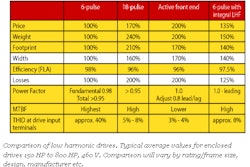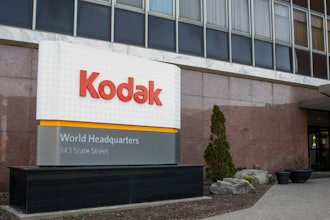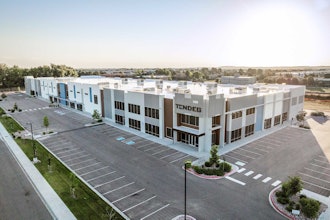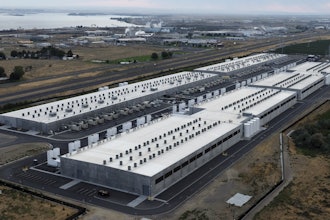Customer “communities” are becoming increasingly popular as social business networks. Cloud ERP solutions are especially well-suited to communities because systems like Kenandy™ ERP have built-in collaboration. The feature allows companies and their partners, such as suppliers, to exchange information in real time. Customer communities extend collaboration by allowing users, partners, and company employees to share information about the product, answer questions, and exchange ideas and best practices.
What is a Customer Community?
A customer community allows users, partners, and company employees to share information, answer questions, post problems, and share ideas about product enhancements and best practices in real time. A community can be public, private, or a hybrid of both models. Many companies keep their communities private to protect their products, and keep the dialog within the company community. To be most effective, a customer community should be available directly from the product, via single sign-on, and be as accessible as possible.
The best customer communities have the following capabilities:
- It’s easy to search through all of the information, or post a question. Once a user asks a question, the search engine might display several potential responses. If the responses are not appropriate, the user can continue posting the question.
- It’s easy to respond to questions and ideas, and build knowledge.
- Users can vote on ideas.
- The search results identify what kind of information it is (e.g., a response to a question or an idea) and who created it.
- Users can receive email responses to their questions, and “follow” any topics that interest them. That way, relevant information is pushed out to them as soon as it is created.
- Users can include multimedia, including text, graphics, and videos.
- A company can apply their own branding to the site.
- A company can identify experts and “champions” to ensure the accuracy of information.
- A company can integrate the community with their CRM system. That way, if a client posts a problem that only pertains to their account, the company can remove it from the community, and automatically create a case on behalf of the client.
The most effective communities are also support portals. The community is at the heart of the portal, but if users can’t find what they need, they also have easy access to other company resources such as documentation and training videos. As a last resort, a user should have the ability to submit an online support request.
Customer Communities Extend Collaboration
With cloud ERP systems like Kenandy, business partners across the enterprise can collaborate in real time, allowing them to take advantage of opportunities as they arise. For example, a manufacturer in San Francisco might submit a purchase order to a suppler in China. A week before the order is due to ship, the manufacturer has a surge in demand, and needs to receive more items immediately. Using a built-in tool like Salesforce Chatter, the request can be submitted to the supplier right away, and the dialogue stays within the context of the purchase order.
In a similar vein, customer communities facilitate collaboration by allowing clients, partners, and employees to share information about the product, respond to questions, offer ideas, and share best practices. Moreover, the conversations happen in real time within the community, and within the context of the product. At Kenandy, clients respond to each other’s questions and get to know the members of their virtual community. The solutions and ideas they come up with become part of a searchable knowledgebase.
Customer Communities are Productivity Tools
Customer communities represent the state of the art in online information because all the content is available and searchable in real time, on the cloud. What’s more, they’re social. Users can add content, comment on it, and build on it. Many users might get concerned about the accuracy of the information, but the best communities support the idea of experts and “champions” who can provide the final word. Most communities also have managers who moderate the community to make sure that questions are answered in a timely fashion, experts step in as required, information stays current, and that all users abide by the community guidelines.
One of the primary benefits of communities is that they make users and the company more productive. According to Michael Fauscette at IDC, companies realize productivity gains of up to 30% by using community tools and sharing knowledge.[1] Users become more productive in several ways:
- They can build on and share product knowledge with their colleagues and the company. In the Kenandy Community, clients share tips and tricks on the best ways to use the product.
- They can build on and share ideas with their colleagues about ways to improve the product, as well as best business practices.
- If a client posts a bug and the company offers a resolution, other clients can benefit from the discussion.
- Users benefit from having one central portal that contains all the information and resources they need in a searchable format.
Companies benefit from many of the same capabilities:
- The shared product knowledge becomes part of the company’s domain. It can be included in the online Help and training, as well as in the marketing material. The knowledge can also be used to build user stories that support the development process.
- Having one way of receiving bugs makes it much simpler for companies to prioritize and resolve them.
Customer Communities Allow Companies to Build Better Products
For years, the “voice of the customer” has been identified as one of the best ways to build better products and services. When a company listens to conversations in the community, they have a perfect opportunity to improve products. For example, in the Kenandy Community, three clients had a discussion about the best way to track purchase price variance. Kenandy listened to the discussion, and is making the appropriate enhancements.
Companies can also use a community to pose questions, or float ideas about potential product enhancements. Kenandy posted a question to find out which barcode scanning devices clients use, and several folks responded. The question also led to other discussions about the best way to use the devices.
Conclusion
One of the many benefits of a cloud ERP system is that it’s easy to use and maintain. Customer communities support the ease of use by giving users access to live, contributed information when and where they need it. In turn, vendors like Kenandy are beginning to realize the benefits of collaboration within their user communities. It’s a process where all the participants are winners, because everyone is empowered to be more effective.
[1] Michael Fauscette, IDC Directions 2013, March 5, 2013























